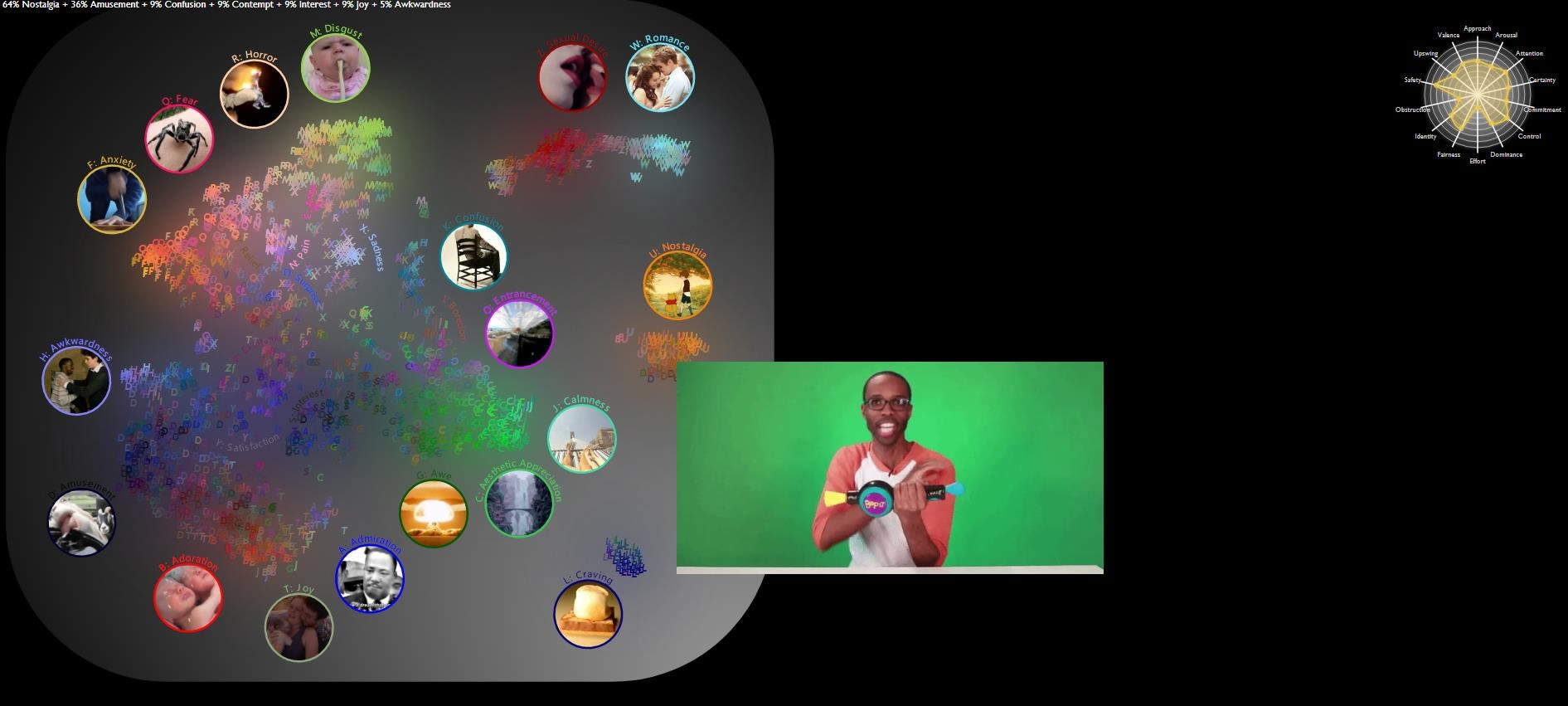
Tech & Sci
21:32, 11-Sep-2017
Researchers identify 27 states of emotion

A new study challenges the long-held assumption in psychology that most human emotions fall within the universal categories of happiness, sadness, anger, surprise, fear and disgust.
Researchers from the University of California, Berkeley have identified 27 distinct categories of emotion based on research with a group of demographically diverse men and women. Using statistical models to analyze their responses to over 2,000 emotionally evocative video clips, the researchers have created a multidimensional map of the emotional categories to show how they're connected.
Moreover, in contrast to the notion that each emotional state is an island, the study, published in the early edition of the Proceedings of the National Academy of Sciences journal, indicates that there are smooth gradients of emotion between, for instance, awe and peacefulness, horror and sadness, and amusement and adoration.

The multidimensional map shows how the 27 distinct categories of emotion are connected. /UC Berkeley Photo
The multidimensional map shows how the 27 distinct categories of emotion are connected. /UC Berkeley Photo
"We don't get finite clusters of emotions in the map because everything is interconnected," study lead author Alan Cowen, a doctoral student in neuroscience at UC Berkeley, was quoted as explaining in a news release.
For the study, participants viewed a random sampling of silent 5-to-10-second videos intended to evoke a broad range of emotions. Themes of the video clips included births and babies, weddings and proposals, death and suffering, spiders and snakes, physical pratfalls and risky stunts, sexual acts, natural disasters, wondrous nature and awkward handshakes.
Three separate groups of participants watched sequences of videos and completed a reporting task after viewing each clip.
The first group freely reported their emotional responses to each of the 30 video clips. "Their responses reflected a rich and nuanced array of emotional states, ranging from nostalgia to feeling 'grossed out,'" noted Cowen.

A sample video from the project. /UC Berkeley
A sample video from the project. /UC Berkeley
The second group ranked each video according to how strongly it made them feel admiration, adoration, aesthetic appreciation, amusement, anger, anxiety, awe, awkwardness, boredom, calmness, confusion, contempt, craving, disappointment, disgust, empathic pain, entrancement, envy, excitement, fear, guilt, horror, interest, joy, nostalgia, pride, relief, romance, sadness, satisfaction, sexual desire, surprise, sympathy and triumph. The participants converged on similar responses, with more than half of them reporting the same category of emotion for each video.
The final cohort rated their emotional responses on a scale of one to nine to each of a dozen videos based on such dichotomies as positive versus negative, excitement versus calmness, and dominance versus submissiveness. Researchers were able to predict how participants would score the videos based on how previous participants had assessed the emotions the videos elicited.
Overall, the results showed that study participants generally shared the same or similar emotional responses to each of the videos, providing a wealth of data that allowed the researchers to identify 27 distinct categories of emotion.

A screenshot of the interactive map shows the video clip and data of emotion. /Photo via UC Berkeley
A screenshot of the interactive map shows the video clip and data of emotion. /Photo via UC Berkeley
Through statistical modeling and visualization techniques, the researchers organized the emotional responses to each video into a semantic atlas of human emotions. On the map, each of the 27 distinct categories of emotion corresponds to a particular color.
"We found that 27 distinct dimensions, not six, were necessary to account for the way hundreds of people reliably reported feeling in response to each video," said study senior author Dacher Keltner, a UC Berkeley psychology professor and expert on the science of emotions.
Source(s): Xinhua News Agency

SITEMAP
Copyright © 2018 CGTN. Beijing ICP prepared NO.16065310-3
Copyright © 2018 CGTN. Beijing ICP prepared NO.16065310-3